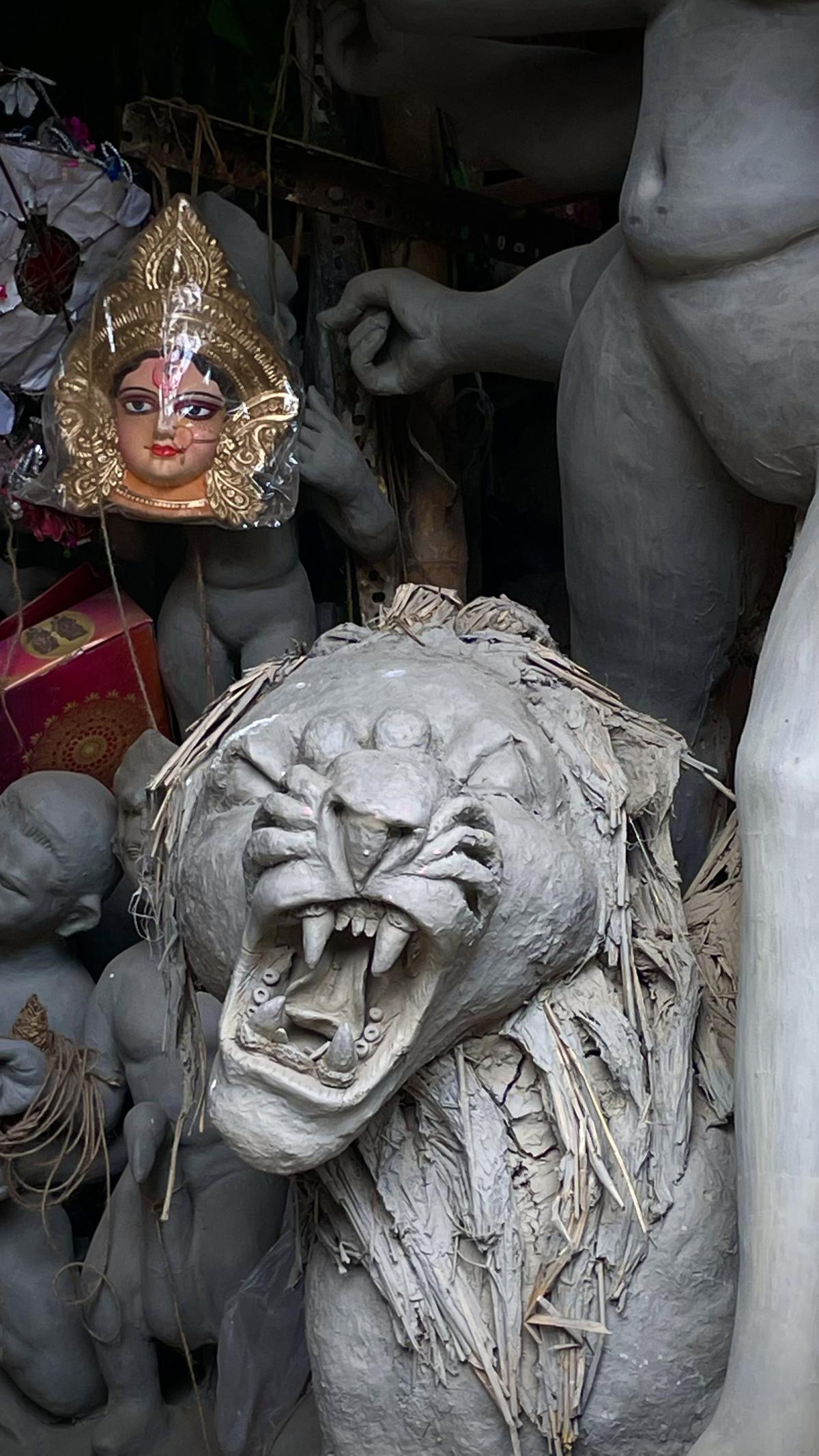After two years, Kolkata returns to being itself — with Durga Puja festivities that not only encompass faith but also life lessons
After two years, Kolkata returns to being itself — with Durga Puja festivities that not only encompass faith but also life lessons
This piece is being composed on the morning of Dashami when the sky is blue in Kolkata, the air fragrant, and the 10-armed goddess and her four children are set to return to their abode, after having graced the city — every nook and cranny of it — for a period of four days that is known as Durga Puja. Now will begin the wait, for next year’s Durga Puja.
In fact, Durga Puja is not so much about the festivities, which end only too quickly, as about the wait. It is a round-the-year countdown.
Vincent van Gogh’s The Starry Night made an appearance at the Hindustan Park Sarbojanin Durga Puja pandal
| Photo Credit: Aryaan Mukherjee
Now, why am I mentioning Dashami, blue skies and the air smelling of shiuli? It is an indication that this year’s puja is over and that nothing untoward happened. It was feared that heavy rains might drench the festivities, but that didn’t happen. It was also feared that some new variant of COVID-19 might knock at the city’s doors just in time to play the spoilsport, but that didn’t happen either. Kolkata finally returned to being itself.
Celebration with a message
Such was its eagerness to celebrate — after being forced to show restraint for two-and-a-half years — that it even chose to ignore controversies, something it usually doesn’t. At one pandal in the city, set up by the Hindu Mahasabha, the demon being put to death by the goddess appeared to be a depiction of Mahatma Gandhi. But no one other than the media seemed to take notice. People were either too busy celebrating or were determined not to allow such mischief to mar the mood. The police came up with a creative solution. They ended this asura’s resemblance to Gandhi by giving him thick hair and a moustache.
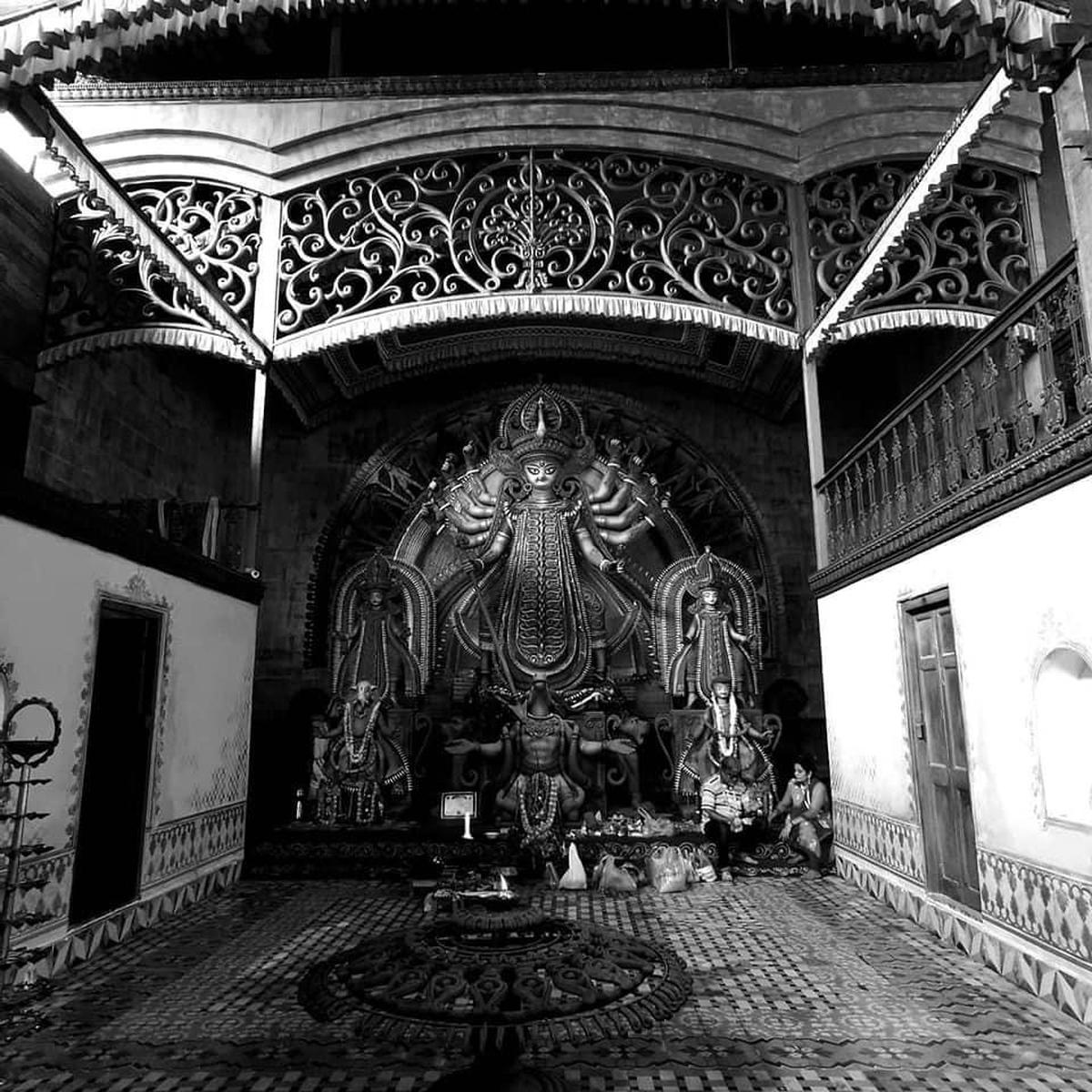
Durga Puja is not so much about the festivities as about the wait. It is a round-the-year countdown
| Photo Credit: Arya Gupta
At one puja in Bhabanipur, the demon was shown as British, but no problem here because this goddess has been slaying the white asura for over a century now. The family holding the puja has merely kept up the tradition.
ALSO READ | Durga Puja is time for literary feast in Bengal and this year is no different
While well-known family pujas — many over two centuries old — stuck to tradition, pandals across the city saw an unprecedented outpouring of creativity bottled up for two years. Many sent powerful messages. One pandal in old Kolkata had a sanitary napkin vending stall and an enclosed area for breastfeeding mothers. Another had dedicated this year’s puja entirely to pets. At the Atlas Club pandal in Shyambazar, only people who brought along pets were allowed near the idols. The idea was to encourage people to be kind to animals, especially stray dogs and puppies, who easily get crushed under speeding vehicles. Here the asura was depicted as a reckless biker. The pandal, needless to say, received massive attention from dog lovers who, for the first time ever, got their pets to pose with the goddess.
A puja for everyone
The pandal where I lingered for a while in spite of the crowd was the one at AK Block in Salt Lake, where the message was about not overburdening the child with studies. Visitors here were welcomed by the depiction of a sad-looking schoolboy carrying a bag larger than himself. It was equally sad to see children posing with the artwork.
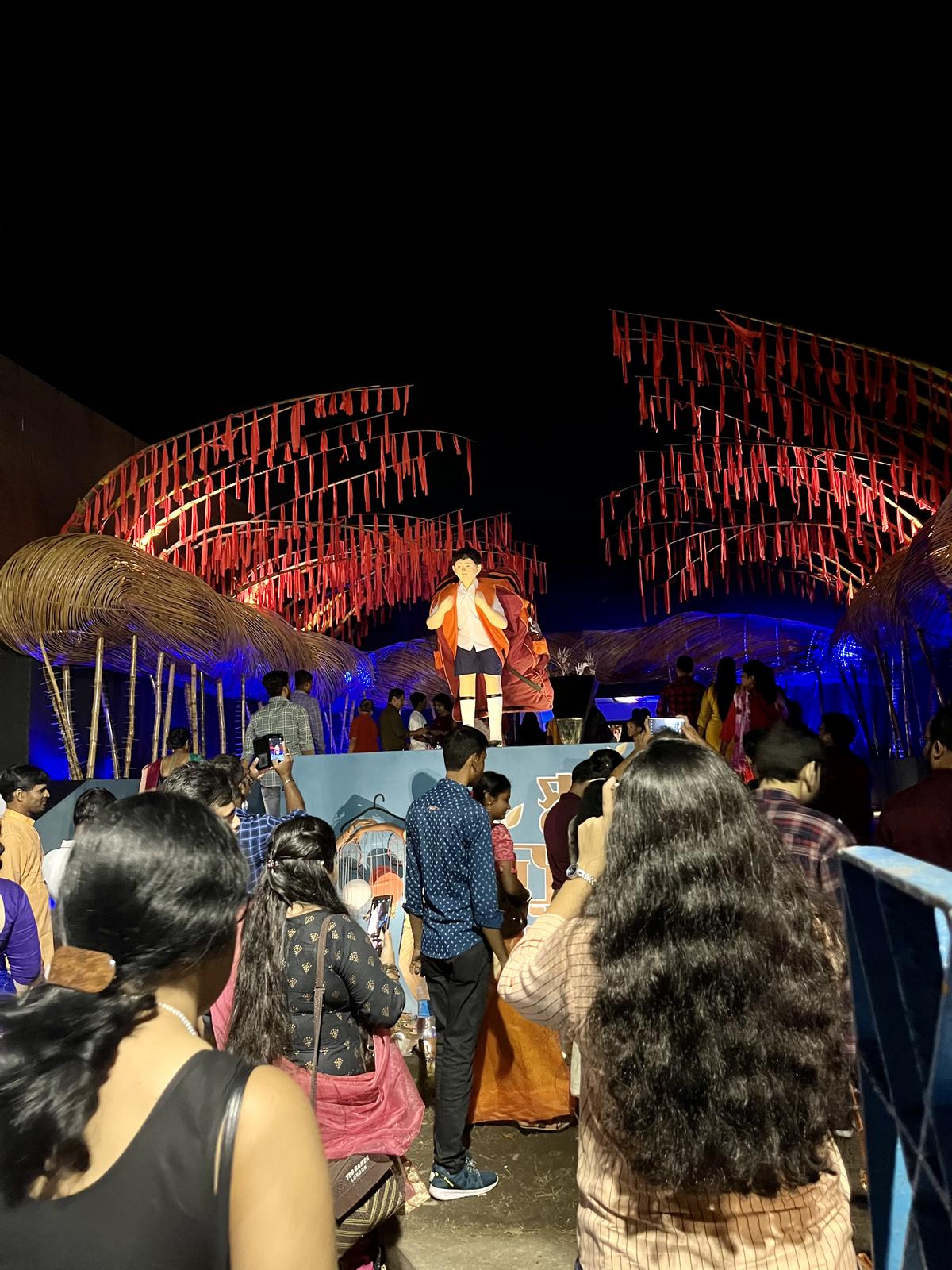
At the pandal in AK Block, in Salt Lake
| Photo Credit: Bishwanath Ghosh
One came across images of A.R. Rahman, Hariprasad Chaurasia, Zakir Hussain, Sachin Tendulkar, Sanjeev Kapoor and many others here; people who were household names in India but not because of their academic achievements. Further inside, where the idols were placed, there were more installations depicting children overburdened by textbooks. Such elaborate artwork to deliver a simple but strong message: take it easy. This can happen only in Kolkata.
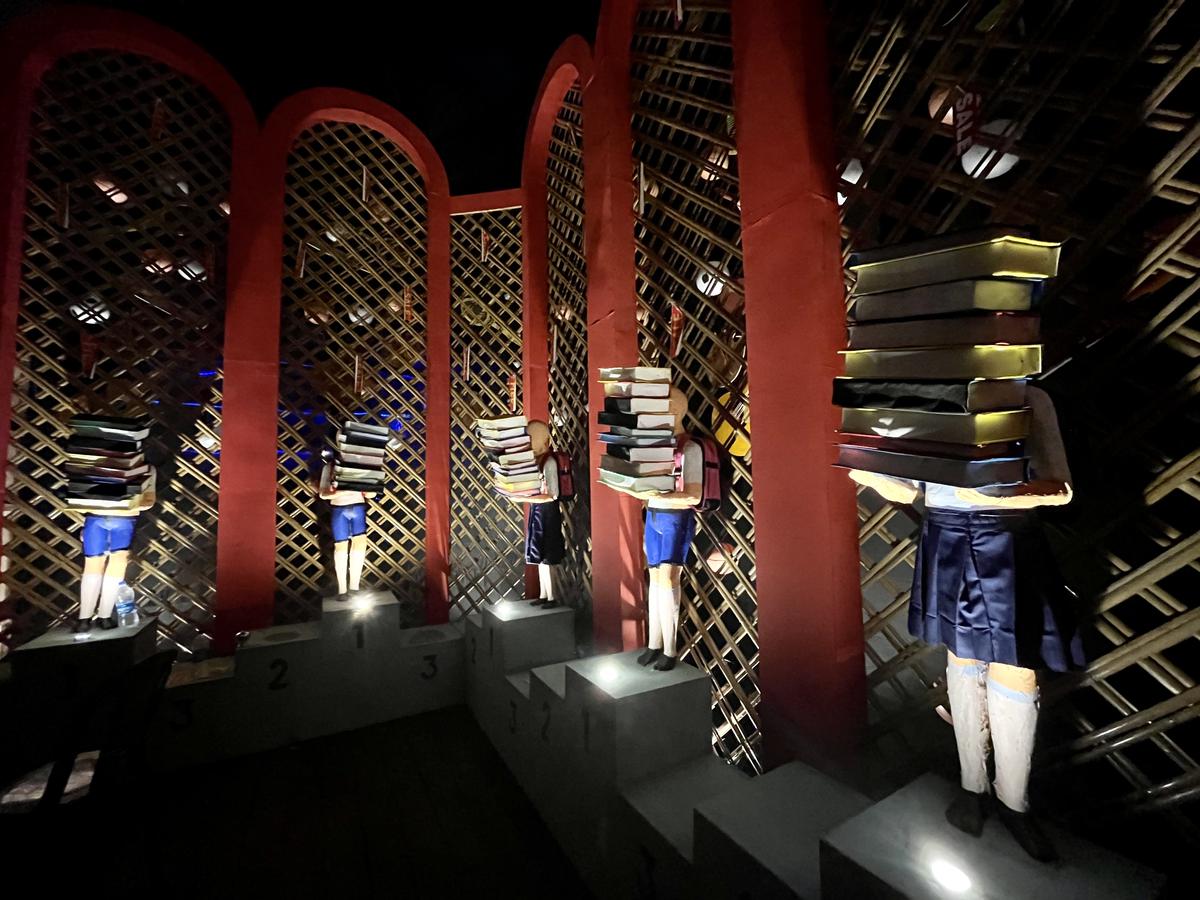
Installations depicting children overburdened by textbooks at the pandal in AK Block, in Salt Lake
| Photo Credit: Bishwanath Ghosh
Amid the celebrations, COVID-19 stood forgotten. No stern reminders of social distancing or the use of masks. Another thing that was promptly forgotten, even though it was expected to add an extra dose of joy to this year’s celebrations: UNESCO’s recognition of Durga Puja as an intangible cultural heritage. Really, what difference does this so-called recognition make to the Bengali, who knows Durga Puja is great. It is not the recognition that makes the festival great.
READ | Understanding the Durga Puja economy
The talk of the town this year, however, was the pandal at Sreebhumi, not far from the airport. It was a replica of Vatican City’s St. Peter’s Basilica. So massive were the crowds that during the first few days after its opening, those landing in Kolkata were stranded on the road for several hours. A church recreated to host Durga Puja? This can happen only in Kolkata.
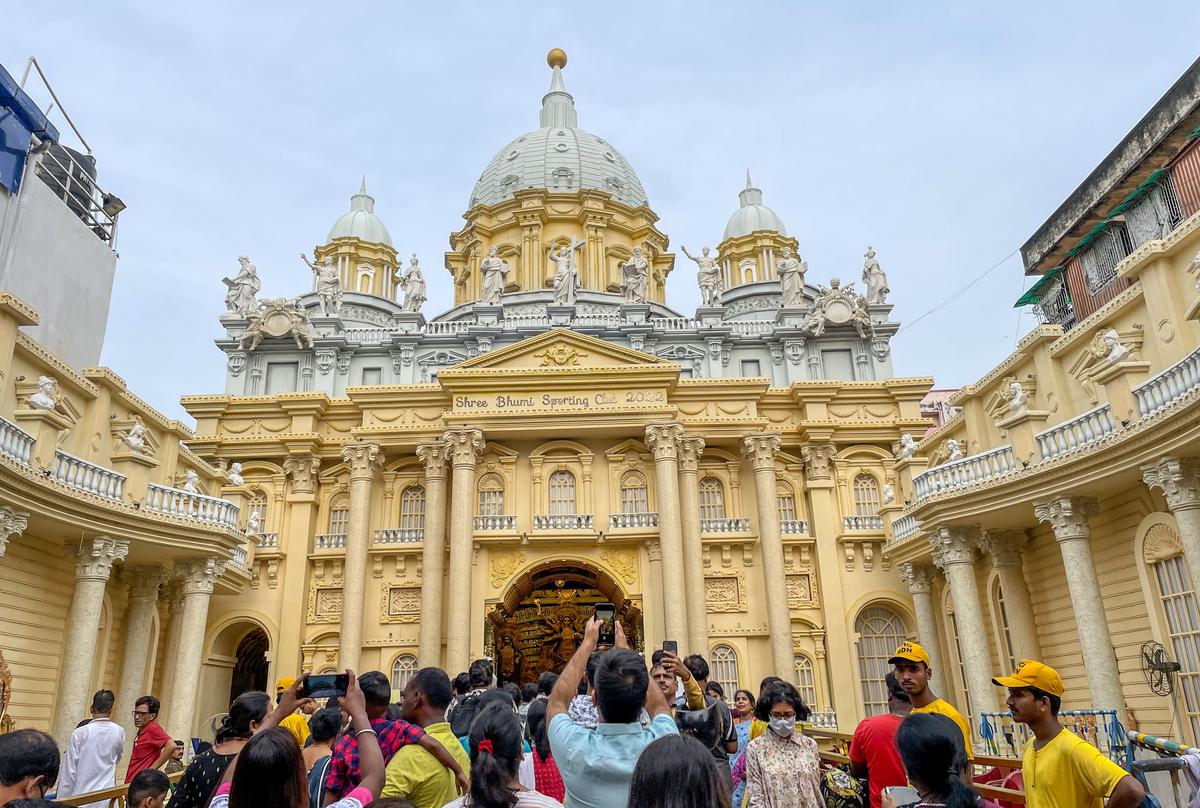
St. Peter’s Basilica recreated at the Shreebhumi Durga Puja pandal in Kolkata
| Photo Credit: Nivedita Ganguly
“I have VIP passes for the Vatican pandal, would you like to go?” a friend asked me last evening.
“No, thanks,” I replied instantly.
Then it occurred to me why I hadn’t even considered visiting the pandal where people had been queuing up for hours just to have a look. The last time I went pandal-hopping with great enthusiasm was in October 2019, when COVID was unheard of and when I was nearly 49. This October, I am nearly 52. The celebrations may have resumed, but my bones are weaker and patience thinner.
* Arya Gupta is a confirmed Kolkatan and an ecofreak who dabbles in street photography, portrait painting and aquascaping.
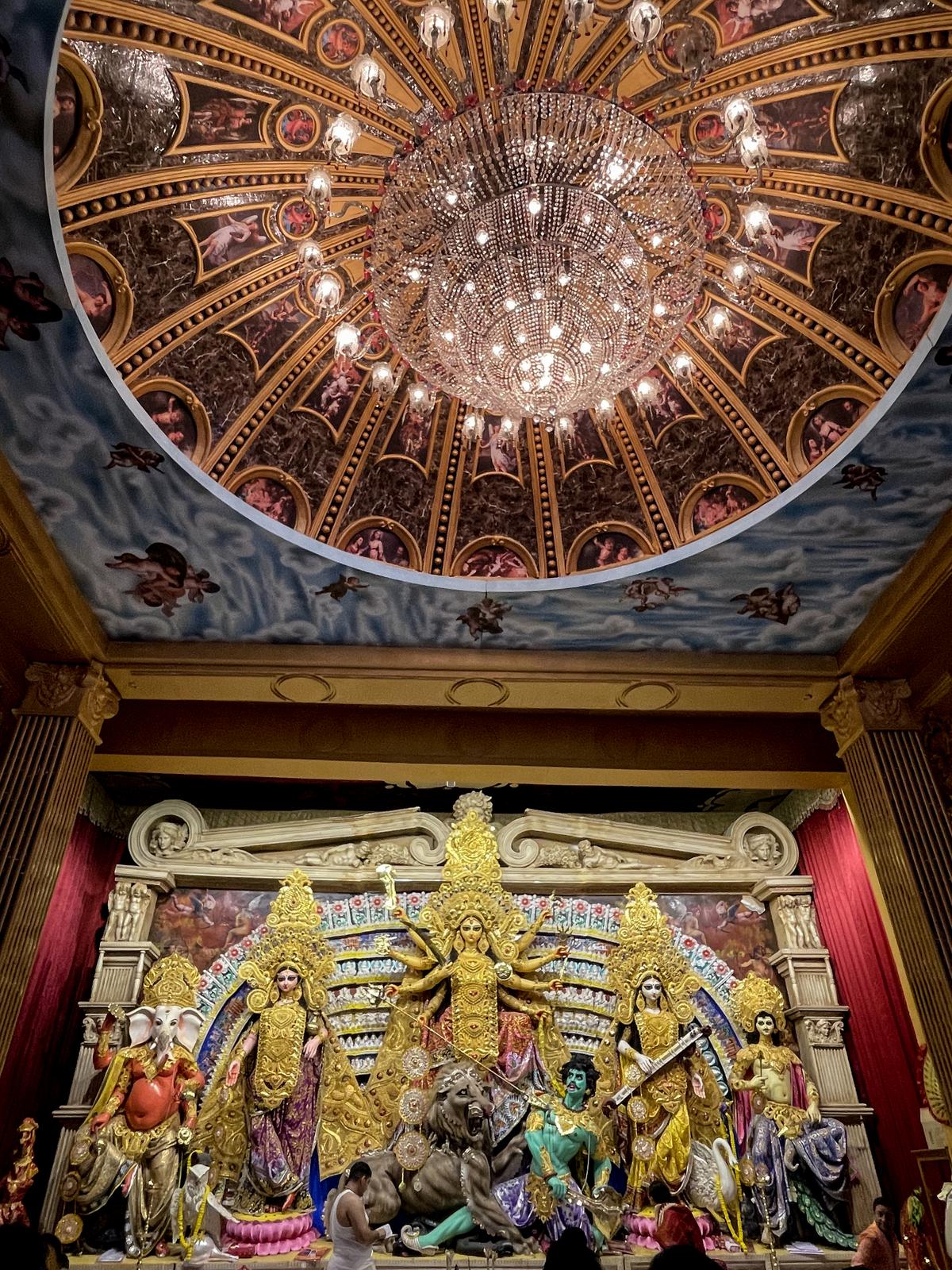
Inside the St. Peter’s Basilica pandal at Shreebhumi
| Photo Credit: Nivedita Ganguly
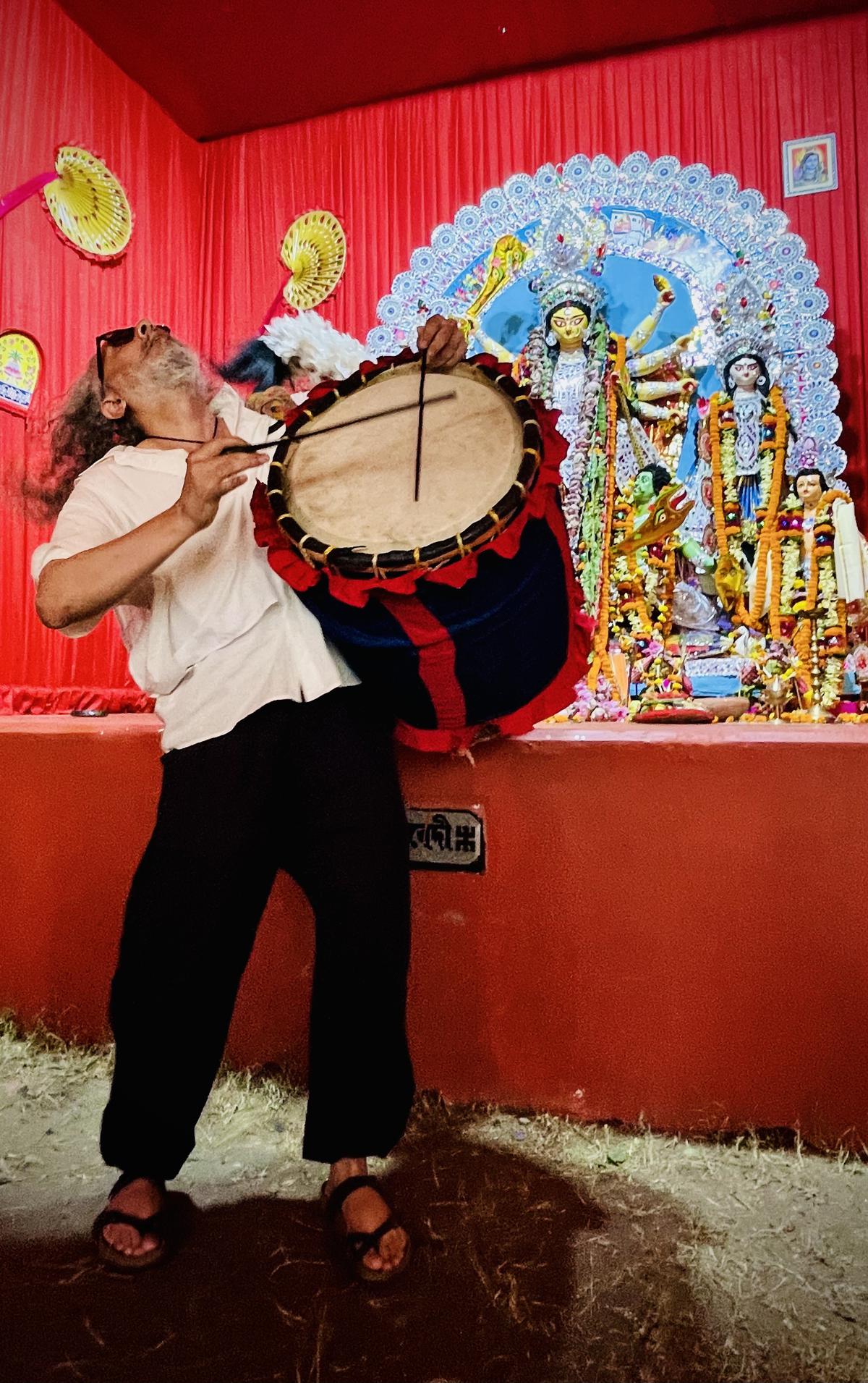
A dhaak performer at Purbachal
| Photo Credit: Arya Gupta
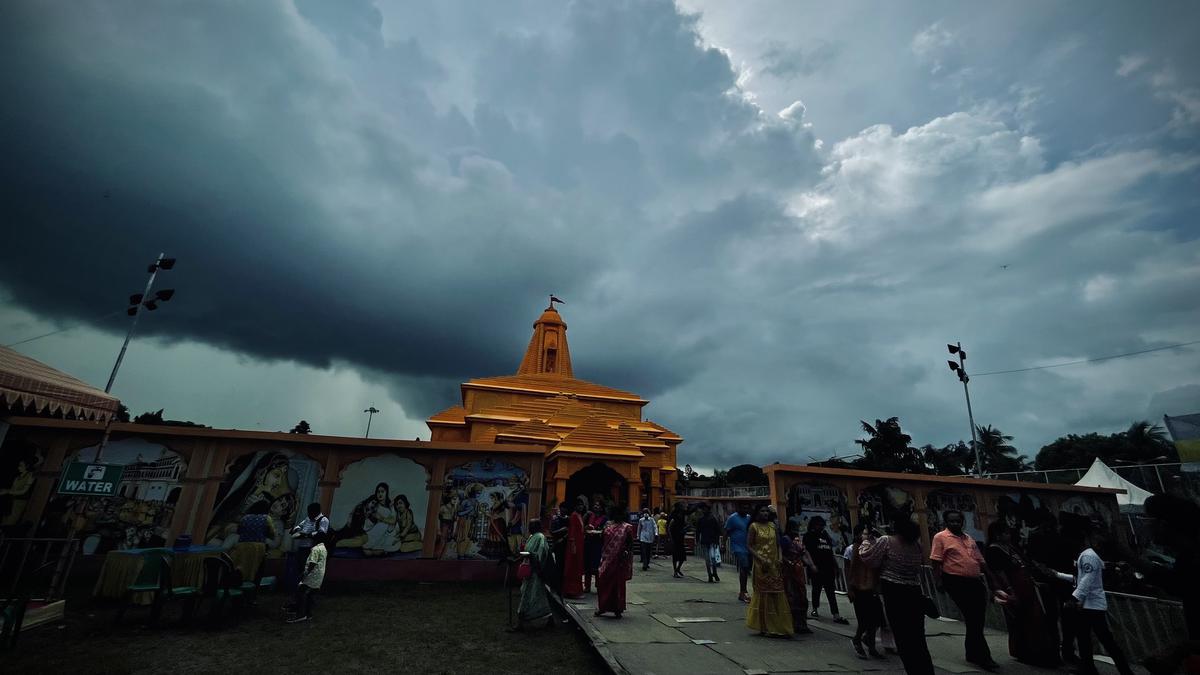
A sprawling temple compound was created at BJ Block, Salt Lake
| Photo Credit: Arya Gupta
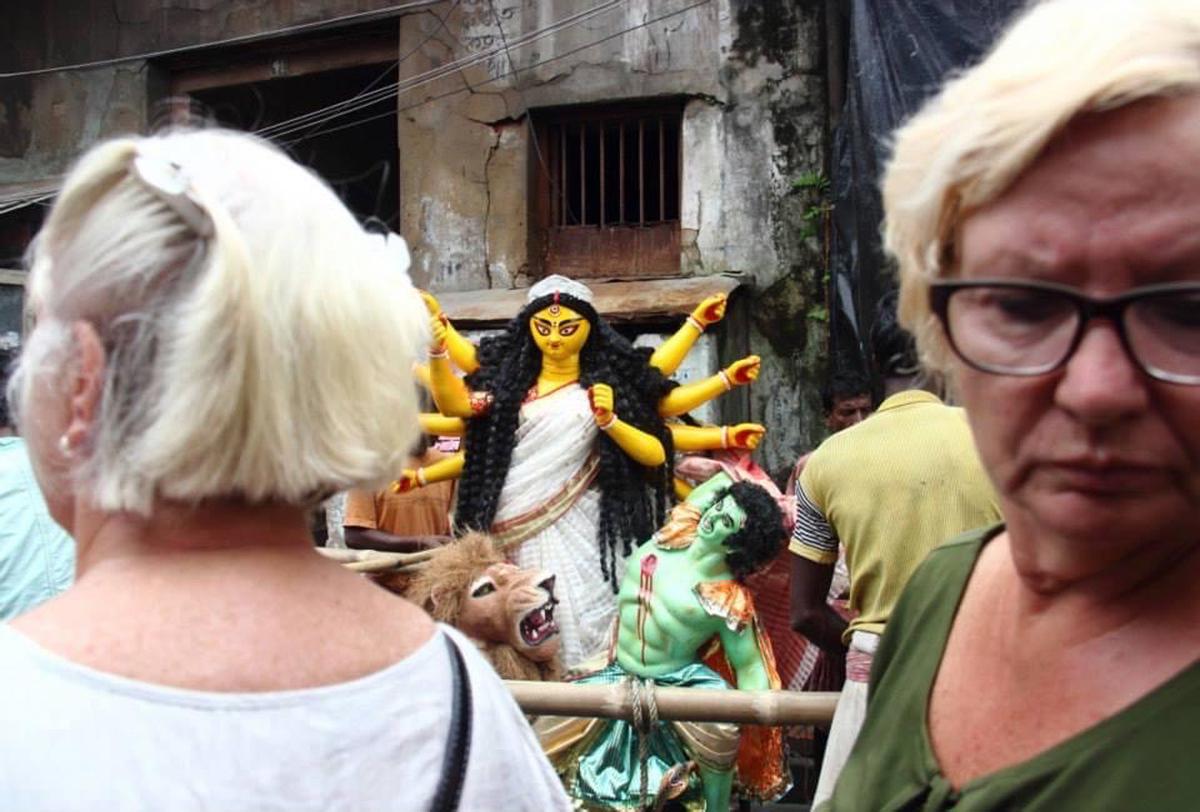
Devotees and tourists alike welcomed the ‘fearless daughter’ near Shyambazar in North Kolkata
| Photo Credit: Arya Gupta
Kolkata : 04/10/2022 :
A pandal decorated with recycled glass near Lake Town
| Photo Credit: K.R. Deepak
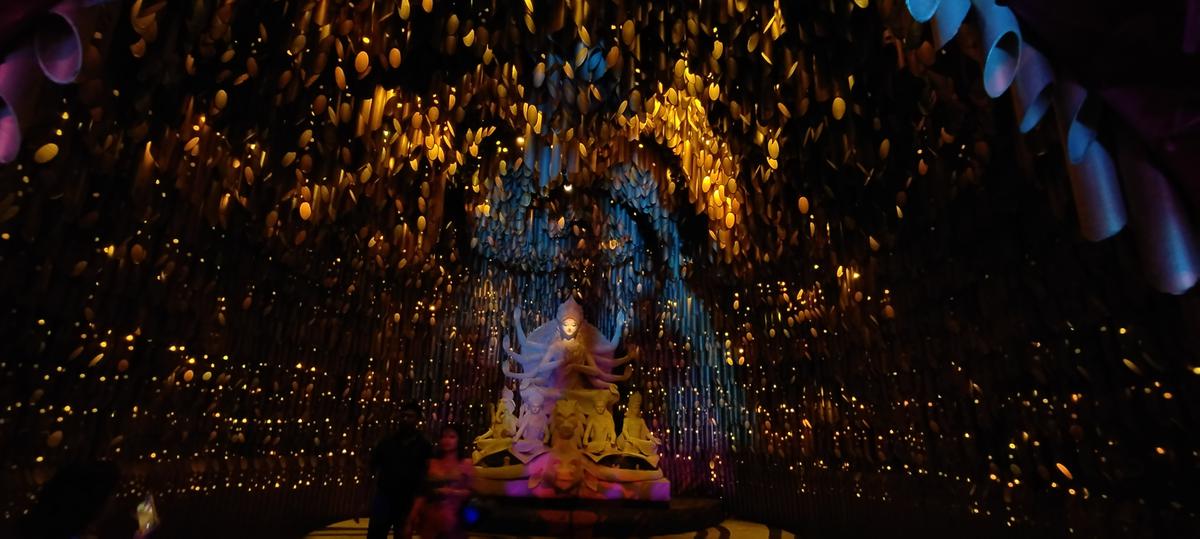
At the Jatiya Seva Dal pandal in Kolkata
| Photo Credit: Debasish Bhaduri
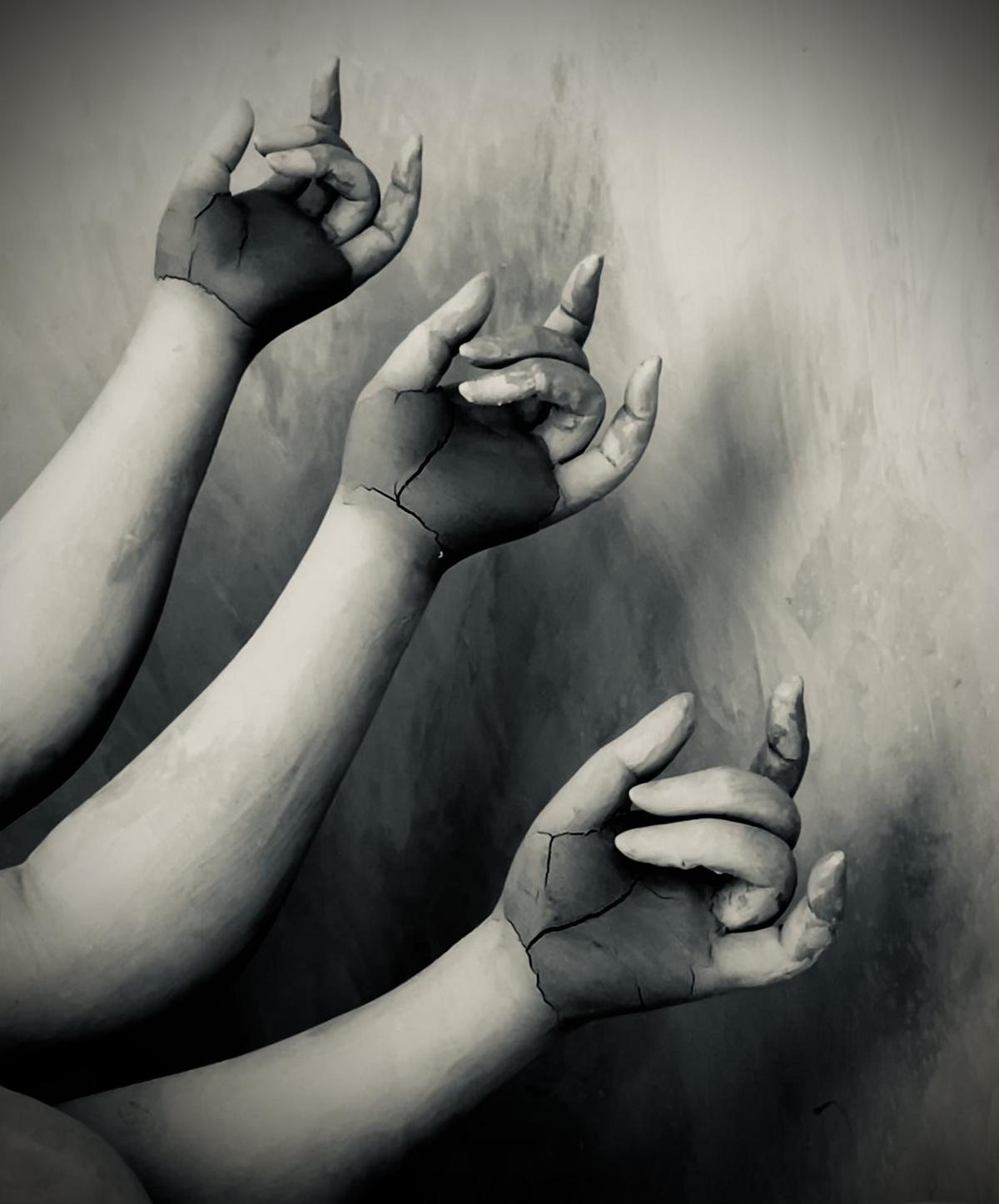
At Kumartuli, the potter’s colony in North Kolkata, where the goddess comes alive
| Photo Credit: Arya Gupta
